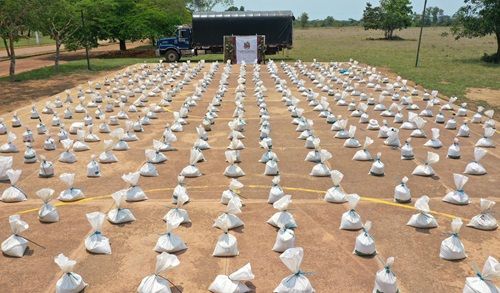The National Aquaculture and Fisheries Authority – AUNAP, informs fishermen, collectors, transporters and merchants of fishing resources in the Colombian Orinoquía region that the ban on consumption and ornamental fish will begin on April 1 and will extend until May 31, in accordance with resolution 2663 of November 9, 2022.
The resolution prohibits the storage, transportation and marketing to the interior of the country or the rest of the Orinoquía of all types of consumer fishing resources extracted from natural populations. Marketing will only be allowed within the same municipality where they were captured and solely for subsistence purposes, limiting the daily catch volume per fisherman to five kilograms per day in accordance with the parameters established in resolution 2700 of November 11, 2022, article 4.2.
It is important to keep in mind that permit holders located in the departments of Vichada, Guainía, Arauca, Casanare, Meta and Guaviare, who have stocks of fishing resources for consumption at the beginning of the closed season period, in the first two days of the ban, (that is, April 1 and 2, 2024), they must send a written communication to the email [email protected], to record the information on the species and volumes that were stored, in order to AUNAP officials record the inventory, verify and close said stocks with seals for storage until the end of the closed period.
Regarding fishing resources of ornamental interest, the rule prohibits the capture, collection, transportation and commercialization of ornamental fish extracted from natural populations throughout the Orinoquía region; Therefore, the application platform for the Mobilization Guides will be disabled for the issuance of this document used to cover the transportation of ornamental fish in the national territory.
Regarding international trade, it is important to note that export requests made there at the Single Window for Foreign Trade – VUCE and that include species from the Orinoquia, will not be authorized.
The implementation of this measure is based on the technical concept of experts, the information collected by local communities and regional institutions, as well as the review of biological-fishery studies of species of commercial importance in the region.
This resolution represents an opportunity for the conservation, management and sustainable use of the fishing resources of the Orinoquía, contributing to the maintenance of the diversity and abundance of the species that are being exploited.
Effective compliance with this measure will contribute to improving the quality of life of families in the region, including indigenous communities, who depend on the use of these fishing resources.
The Orinoquía in Figures
Of the 92 species of fishing resources used by artisanal fishing for consumption in continental waters, 60% come from the Colombian Orinoquía region. Likewise, 62% of the 521 species of fishing resources of ornamental interest correspond to ornamental fish from this region.
According to the landings reported by the SEPEC at the end of 2023, fishing production in the Orinoquía reaches 6,001.26 tons.
Source: The National Aquaculture and Fisheries Authority – AUNAP
